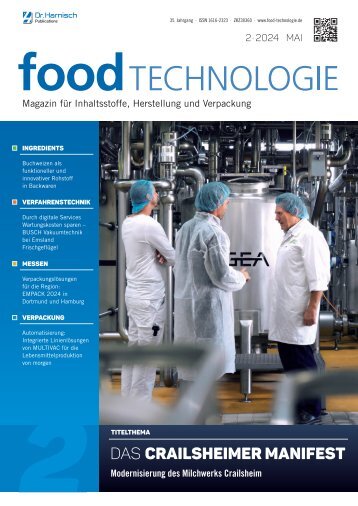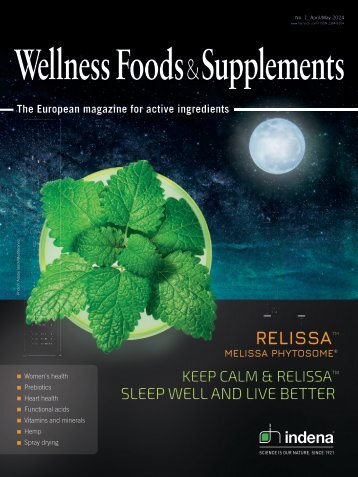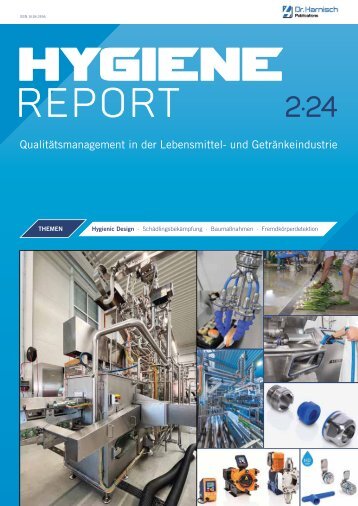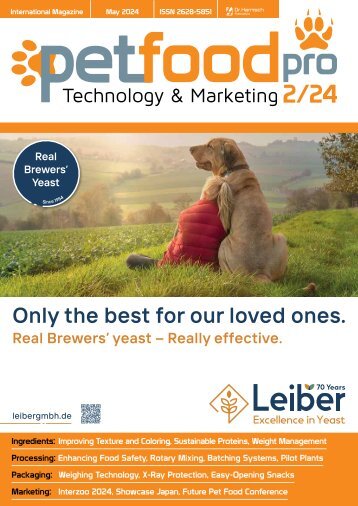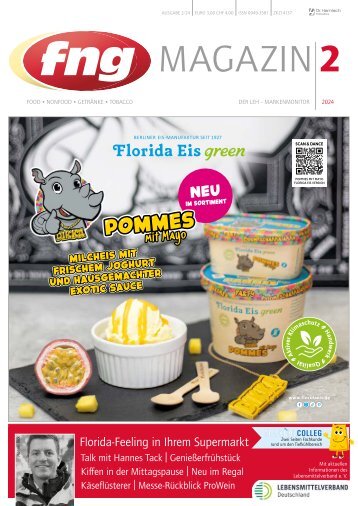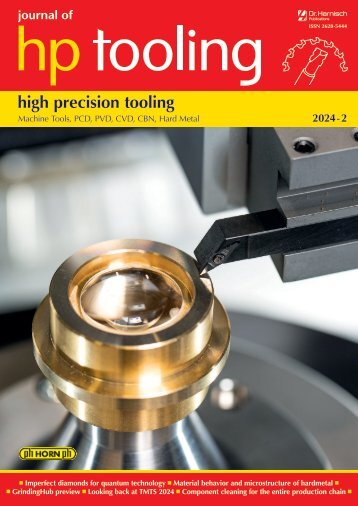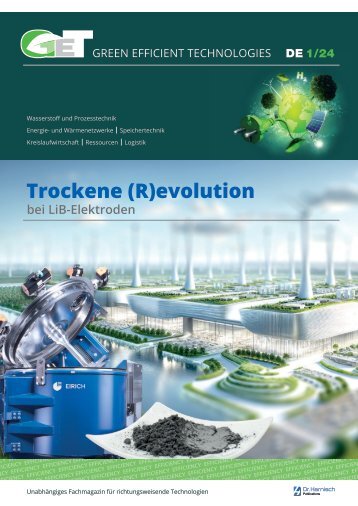petfood pro 2/2021
- Text
- Harnischcom
- Petfood
- Packaging
- Solutions
- Processing
- Fatty
- Global
- Sausage
- Pets
- Ingredients
- Marketing
- Products
Ingredients Achieving
Ingredients Achieving these and other health benefits depends on using pet food ingredients with the right type and concentration of omega-3 fatty acids. Different kinds of omega-3 There are three types of omega-3 fatty acid involved in the physiology of mammals. These are the short-chain alpha-linolenic acid (ALA) and the long-chain eicosapentaenoic acid (EPA) and docosahexaenoic acid (DHA). ALA is the most common and is found mainly in vegetable oils, such as flax oil, soya oil, and canola oil. EPA and DHA are mostly found in marine oils and algae. It is a common yet crucial misunderstanding that ALA is just as beneficial for pet health as EPA and DHA. Cats and dogs are unable to synthesize any of the essential omega-3 fatty acids. They can only be obtained through diet but, of the three different types, only EPA and DHA are directly effective. To achieve any health benefits, the short-chain fatty acid ALA first needs to be converted in the body into the long-chain fatty acid EPA and then into DHA. This only happens at a low conversion rate of just 0.2 to maximum 10% for EPA and at an almost negligible conversion rate of 0 to 1% for DHA. This means that the majority of ALA is not converted and utilized, but simply used directly or stored as energy, similar to other fats. Essential health benefits EPA and DHA long-chain omega-3 fatty acids offer a number of specific benefits to the health and well-being of cats and dogs. These include supporting different biological functions, increasing the absorption of vitamins and minerals, stimulating hormone production, and helping to manage inflammatory problems in the prevention and treatment of diseases. EPA can be converted in vivo into anti-inflammatory components, thereby managing inflammatory problems related to joints, skin and coat, and heart and bladder diseases. DHA has a more structural role and is found in high concentrations in nerve tissue, such as the brain and eyes. EPA and DHA long-chain omega-3 fatty acids are beneficial to the growth and healthy development of puppies and kittens. They need long-chain omega-3 fatty acids to feed their growing brains, while older pets benefit from the support provided to their aging brains. Furthermore, the intake of long-chain omega-3 fatty acids is reported to support healthy joints and enhance joint health in older dogs, thereby improving their walking ability. It also helps to improve clinical symptoms in cats and dogs with osteoarthritis by reducing inflammatory reactions and the breakdown of cartilage. Research has shown that long-chain omega-3 fatty acids significantly increase mean peak vertical force and weight bearing in dogs with osteoarthritis. Furthermore, they can reduce the severity of cachexia in cats and dogs, thereby prolonging their life expectancy. Effective use of ingredients Convincing the pet food industry to acknowledge the importance of EPA and DHA is step one. The next step is to find an effective, efficient, economical, and sustainable source of these long-chain omega-3 fatty acids to meet increasing global demand. Traditionally, pet food manufacturers have added different sources of omega-3 fatty acid to pet food formulas, including vegetable oils, salmon oil, and fish oil. Vegetable oils are the least effective, as these are rich in ALA, which is only converted into EPA and DHA in very small amounts. Also many vegetable oils are rich in omega-6. Particularly when combining them with commonly used poultry ingredients, this can result in pet food with an imbalance between the amount of omega-6 and omega-3. High amounts of omega-6 may cause inflammatory health problems. As alternatives to vegetable oils, salmon oil and fish oil have traditionally been considered to be rich in EPA and DHA. However, the concentration of EPA and DHA in salmon oil has changed over the years due to changing feed formulations in the aquaculture industry: fish meal has been replaced as the primary source of protein by soya-based feed and other animal proteins, while fish oil has been replaced by vegetable oil and poultry fat. As a result, the %age of EPA and DHA in farmed salmon has fallen. On average, wild salmon oil contains 9% EPA and 11% DHA compared to only 3% EPA and 4% DHA in farmed salmon oil. Unlike salmon oil, fish oil is produced from different species of fish. Wild anchovies and sardines have the highest concentration of omega-3 fatty acids, averaging 18% EPA and 12% DHA, but this varies during the year. Their availability depends on the season and geographical location, causing strong fluctuations in price. The supply of fish oil is already exceeded by global demand and this gap is expected to increase drastically over the coming years due to fishing quota limitations and growing demand for its use 24 Technology & Marketing
Ingredients in aquaculture feed, which has a CAGR of 4%. With the global demand for omega-3 increasing, the pet food industry would benefit from a sustainable, consistent, and high-quality source of long-chain omega-3 traceable, sustainable, high-quality pet food ingredient with a consistently high level of DHA long-chain fatty acid. This method enables large and consistent production volumes of DHA at an economic scale to keep intake (AI) estimate of 0.11 g of EPA and DHA combined per 1000 kcal of diet. For cats, the NRC provides an AI estimate of 0.025 g of EPA and DHA combined per 1000 g diet in a food containing 4000 kcal/kg. fatty Microalgae acids. can be cultured under different conditions up with industry and using demand. different Compared methods, with fish including a phototrophic or heterotrophic culture strategy. oil, microalgae In particular, are microalgae a direct, cleaner, grown and under more controlled In order to be effective and deliver full health Sustainable conditions through source heterotrophic of omega-3fermentation sustainable offer a source fully traceable, of essential sustainable, omega-3 longchain high-quality benefits, pet omega-3 levels in pet food should of DHA fatty long-chain acids. Adding fatty microalgae acid. This method rich in enables in any large case not be measured by the %age of Different food ingredient species of with fish accumulate a consistently their high EPA level and and DHA consistent reserves production by directly volumes or indirectly of DHA at DHA an to economic the pet food scale formula to keep also up with covers industry EPA demand. vegetable oil, salmon oil, fish oil, or algae DHA, consuming Compared microalgae. with fish oil, At microalgae the same are time, a direct, supply cleaner, needs, and because more the sustainable DHA can be source retro-oconverted essential but by the actual %ages of EPA and DHA. The rich into DHA EPA by to the animal pet food at formula a rate of also most covers efficient, cost-effective, and beneficial they omega-3 also accumulate long-chain contaminants, fatty acids. Adding such as microalgae PCBs, EPA dioxins, supply needs, and heavy because metals, the which DHA can end be retro-converted approximately 25%. into If pet EPA food by the manufacturers animal at a rate method of for the pet food industry to achieve up approximately in the fish oil 25%. (see If table pet food 1). Microalgae manufacturers insist insist on on ingredients rich rich in in both both EPA EPA and and DHA, this at is IQI to use ingredients with concentrated are we also microscopic, offer blends unicellular of fish oil organisms and algae DHA. DHA, at IQI we also offer blends of fish oil and sources of EPA and DHA. that are typically found in freshwater and algae DHA. Technology & Marketing marine Pet food ecosystems. formulation Most microalgae species produce At present, unique there products are no and generally compounds, required minimum Pet food levels formulation of EPA and DHA intake for cats and dogs. such However, as carotenoids, for specific nutritional antioxidants, purposes, and like At present, dermatitis there and are osteoarthritis, no generally the required EU has defined omega-3 specific fatty requirements acids. Together (see table with bacteria, 2). The typical minimum or recommended levels of EPA requirements and DHA of intake EPA and DHA for microalgae cats and dogs form set the by base the of National the food Research web Council for cats (NRC) and in dogs. the US However, and FEDIAF for in specific the EU are still and quite are nature’s conservative. original For ‘super dogs, food’. the NRC currently nutritional provides purposes, an adequate like intake dermatitis (AI) estimate and of 0.11 g of EPA and DHA combined per 1000 kcal of diet. osteoarthritis, For cats, the the NRC EU provides has defined an AI estimate specific of 0.025 g of Microalgae EPA and DHA can be combined cultured per under 1000 different g diet in a requirements food containing (see 4000 table kcal/kg. 2). The typical or conditions In order to and be effective using different and deliver methods, full health recommended benefits, omega-3 requirements levels in pet of food EPA should and in any case including not be measured a phototrophic by the or percentage heterotrophic of vegetable DHA for oil, cats salmon and oil, dogs fish set oil, by or the algae National DHA, but by the culture actual strategy. percentages In particular, of EPA and microalgae For more information DHA. The most Research efficient, Council cost-effective, (NRC) in the and US beneficial and FEDIAF method for the grown pet food under industry controlled to achieve conditions this through www.iqi-petfood.com is to use ingredients the EU are with still concentrated quite conservative. sources For of dogs, EPA and DHA. heterotrophic fermentation offer a fully the NRC currently provides an adequate Nutritional Reference Cats & dogs Cats Dogs Puppies purpose Osteoarthritis EU PARNUT 0.25% DHA 0.33% EPA Industry reference Dermatitis EU PARNUT 0.29% EPA + DHA Range of EU veterinary diets Brain Industry development reference Heart Industry reference 0.21 – 0.57% EPA (similar for DHA) 0.40% EPA + DHA to 1.40% 0.09 – 0.9% EPA (similar for DHA) 0.24 – 0.8% EPA and 0.1 – 0.8% DHA 0.14 – 0.20% DHA Table 2: Typical or recommended amounts of EPA and DHA (calculated with typical energy content of 3500 kc/kg for dogs and 4000 kc/kg for cats) [Additional general text about IQI] Issue 2 2021 25
- Seite 1 und 2: International Magazine June 2021 IS
- Seite 3 und 4: editorial Feeding the family The gl
- Seite 5 und 6: Departments 3 Editorial 52 Upcoming
- Seite 7 und 8: Cover STory of foreign material nee
- Seite 9 und 10: Ingredients Issue 2 2021 9
- Seite 11 und 12: Ingredients than other rice protein
- Seite 13 und 14: Ingredients • Key ingredients: al
- Seite 15 und 16: Ingredients Carrot • Key ingredie
- Seite 17 und 18: Ingredients • Helpful in cases of
- Seite 19 und 20: HANDTMANN FOOD TEC 2021 EXPERIENCE
- Seite 21 und 22: Ingredients ©Photos: biomega Ready
- Seite 23: Ingredients The Importance of EPA a
- Seite 27 und 28: processing Matt Hale, International
- Seite 29 und 30: DRY PALATANTS Dry pet food palatant
- Seite 31 und 32: processing Clipped sausage product
- Seite 33 und 34: processing s.33 ANZ Zoomark aus PF
- Seite 35 und 36: New All-in-One Cutting Solution pro
- Seite 37 und 38: processing Raw meat from Primal The
- Seite 39 und 40: Packaging HIGH PERFORMANCE PACKAGIN
- Seite 41 und 42: Packaging In operation the cartonin
- Seite 43 und 44: Packaging Consumers love the ease o
- Seite 45 und 46: Marketing Retail food the strongest
- Seite 47 und 48: Events Dr. Rowena Arzt, Director Ex
- Seite 49 und 50: Physiological, Grain-free and Diete
- Seite 51 und 52: Events Zoomark International to be
- Seite 53: International Magazine June 2021 IS
Unangemessen
Laden...
Magazin per E-Mail verschicken
Laden...
Einbetten
Laden...








































